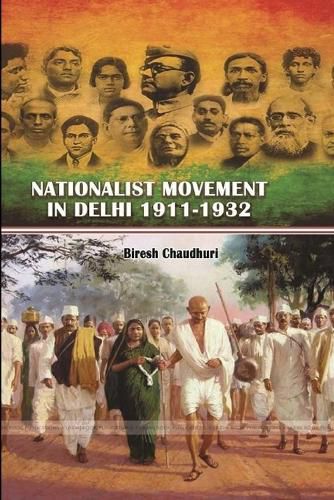Readings Newsletter
Become a Readings Member to make your shopping experience even easier.
Sign in or sign up for free!
You’re not far away from qualifying for FREE standard shipping within Australia
You’ve qualified for FREE standard shipping within Australia
The cart is loading…






This title is printed to order. This book may have been self-published. If so, we cannot guarantee the quality of the content. In the main most books will have gone through the editing process however some may not. We therefore suggest that you be aware of this before ordering this book. If in doubt check either the author or publisher’s details as we are unable to accept any returns unless they are faulty. Please contact us if you have any questions.
Delhi came under the British rule in 1803 following the defeat of the Marathas at the hands of the British forces, led by General Lake in the Battle at Patparganj near Chalera Village in the current city of Noida. General Lake established a residency at Delhi with Sir David Ochterlony as its first resident and Chief Commissioner. Following the British conquest, there was an impression that the population of the city was steadily increasing. In 1806, Lord Lake and others were convinced that there was a definite increase in the population and attributed it to the novelty of a regime of comfort, security and impartial justice. Census reports from 1833 to 1853 showed a rise in population from 131,000 to 151,000. Most of the population was concentrated around the Chandni Chowk and Faiz Bazaar region of Daryaganj. The reason for this substantial increase in population was said to be the annual increase in the influx of people from outside, mostly from Punjab.
$9.00 standard shipping within Australia
FREE standard shipping within Australia for orders over $100.00
Express & International shipping calculated at checkout
This title is printed to order. This book may have been self-published. If so, we cannot guarantee the quality of the content. In the main most books will have gone through the editing process however some may not. We therefore suggest that you be aware of this before ordering this book. If in doubt check either the author or publisher’s details as we are unable to accept any returns unless they are faulty. Please contact us if you have any questions.
Delhi came under the British rule in 1803 following the defeat of the Marathas at the hands of the British forces, led by General Lake in the Battle at Patparganj near Chalera Village in the current city of Noida. General Lake established a residency at Delhi with Sir David Ochterlony as its first resident and Chief Commissioner. Following the British conquest, there was an impression that the population of the city was steadily increasing. In 1806, Lord Lake and others were convinced that there was a definite increase in the population and attributed it to the novelty of a regime of comfort, security and impartial justice. Census reports from 1833 to 1853 showed a rise in population from 131,000 to 151,000. Most of the population was concentrated around the Chandni Chowk and Faiz Bazaar region of Daryaganj. The reason for this substantial increase in population was said to be the annual increase in the influx of people from outside, mostly from Punjab.